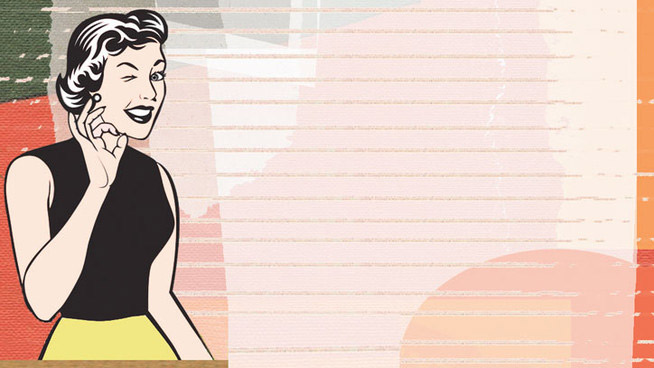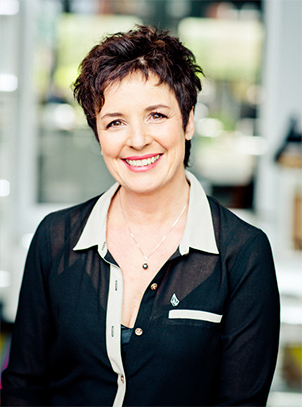Yes to snacks
In some cases, a snack actually does fulfill a physiological need. It is necessary to deal with hunger caused by eating a meal that was too light or incomplete, when the following symptoms arise: lack of energy, difficulty concentrating, and empty stomach, sometimes even headaches and mood swings... Don't ignore your body's signals in an attempt to try and control your appetite. Snacks are also essential before participating in a sporting activity or when you know that the next meal will be delayed for one reason or another.
No to snacking
In other cases, eating between meals is a response to a psychological need, brought on by a number of reasons: an intoxicating smell or alluring food ad, or stress, boredom, sadness… This sudden craving for a specific food ("I really need some chocolate fudge brownie ice cream!") drives us to eat, even if our body is not hungry. Too often, it is a snack we do not really need. It adds unnecessary calories to our daily intake, and can result in an increased risk of slow but sure weight gain.
The latest trend: 100-calorie snack packs
Does this ease our guilty conscience? The fact is that several foods are now available in 100-calorie servings. We're not talking about fruit here, but rather sources of fat, sugar and salt, in the form of cookies, chips, crackers, candy, chocolate, mini-cakes, soft drinks… There's nothing nourishing to nibble on between meals, except for a small bag of almonds or a bag of 100-calorie popcorn sometimes found on a store shelf. This is not surprising as nearly half the calories consumed between meals (42 %) come from foods that do not belong to any group listed in Canada's Food Guide. That's a lot of extra calories.
Remove the temptation!
There is room in a healthy diet for the occasional small treat, but it's just junk food if consumed daily. American Professor Brian Wansink, Ph.D. in marketing and director of the Food and Brand Lab at Cornell University in Ithaca, New York, conducted a simple, yet revealing study of secretaries at American colleges. Those who had a bowl of chocolate Kisses on their desk ate more chocolate than those who had a bowl located two metres from their work station. Not only did the secretaries with chocolate on their desk eat more, but they also thought they were eating less! In fact, they underestimated their chocolate intake by 63%!
At home, avoid succumbing to an ice cream or potato chip binge by buying these snacks less often, or even keeping them out of sight (in the basement or at the back of the cupboard, for example). Out of sight, out of mind… and out of hand! And don't underestimate the amount you eat over time.
Beware of supersizes!
The link between portion size and the increase in obesity has been solidly established for several years. The bigger the portion, the more you eat, from 30 to 50% more food. Even if we don't really like the food! The proof? Dr. Wansink's team also studied a group of 158 moviegoers in Chicago who were served the same amount of 10-day-old popcorn, but in two different-sized containers. Those with the larger containers ate 61% more than those who had received the smaller size, despite the stale taste of the popcorn.
The same held true for football fans. University students at a Super Bowl party were invited to help themselves to some high-calorie snacks (pretzel-chip mix, roasted nuts) before the game started. On one table, the food was put in two large 4-litre bowls. On another table, the same amount of food was equally divided and placed in four medium 2-litre bowls. Students taking snacks from the large bowls ate 53% more. The concept of portion distortion was in play: you think it is ok to eat more when presented with a larger serving of food, even if it is chock full of calories.
How to satisfy a little craving?
Our two allies at snack time are protein and fibre. Protein helps stabilize blood sugar levels (glucose), maintain a good energy level and sustains us until the next meal. It's found in dairy products, meat and poultry, seafood, eggs, grains, legumes, nuts and seeds.
As for fibre, it increases the volume of food in the stomach and slows gastric emptying. It also contributes to that "full" feeling and appetite control. In addition, fibre-rich foods require more chewing, and so slow the rate and amount of food ingested. It is found only in plants: fruit, vegetables, nuts, seeds, dried fruit, legumes, and whole grain cereal products.
On the other hand, if you need to eat something small in the 60 minutes before a sporting activity, it's better to choose a light snack that provides some carbs. Fruit yogurt, a good granola bar or a banana are a few options.
4 snacks, reviewed and improved
Mid-morning energy slump
Coffee and a donut? Consider instead: A homemade muffin (forget about store-bought 'cake' muffins) and a half-and-half café au lait
What's in it for you: avoid a bunch of additives, plus there's 6 times less fat
Bonus: 7 times more protein and calcium
Candy craving
A handful of jellybeans and an iced tea? Consider instead: A handful of dried berries (cherries, cranberries, blueberries…) and a cup of green tea
What's in it for you: nearly half the calories and 20% less sugar
Bonus: 1 serving of fruit and a source of fibre
Munchies during Happy Hour
A bag of potato chips? Consider instead: a mini-bag of low-fat microwave popcorn
What's in it for you: 25% fewer calories and 65% less fat
Bonus: 2 times more fibre and 1 serving of whole grains

